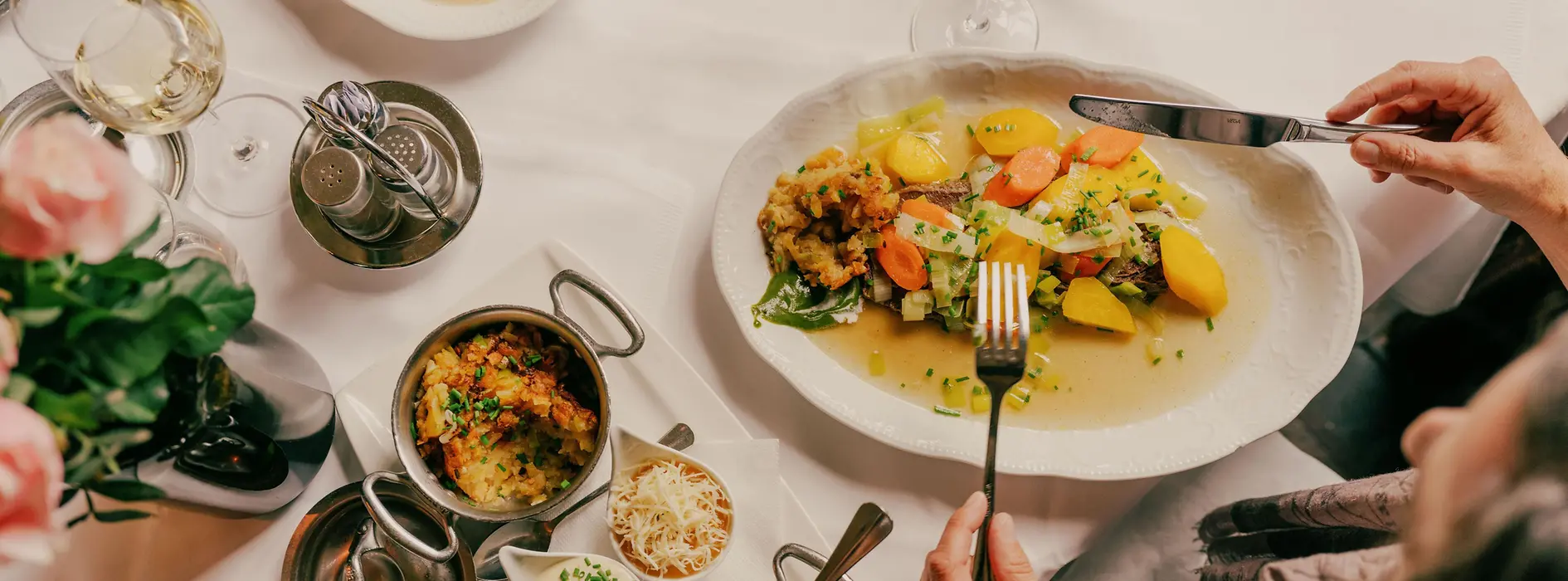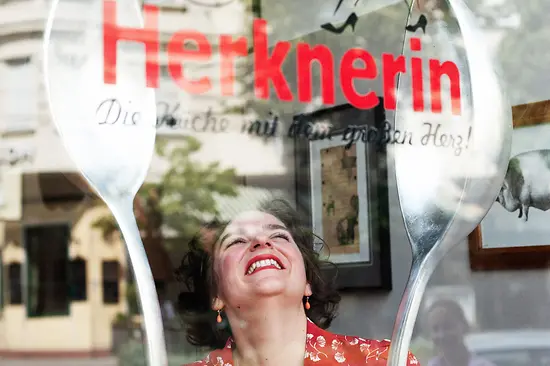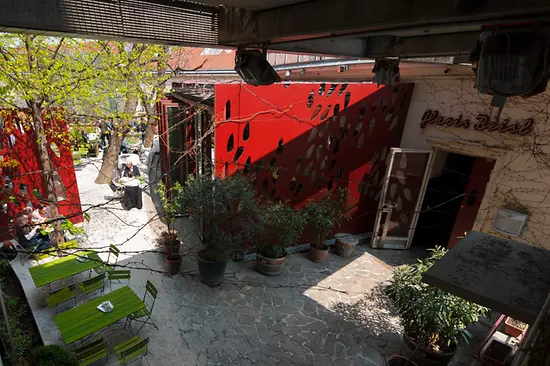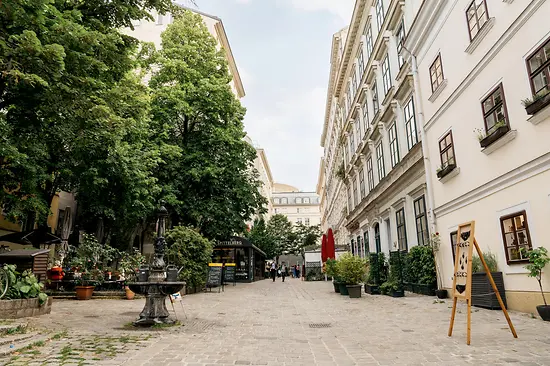Cult of Beef
“Boiled beef is the soul of Viennese cuisine,” the essayist and journalist Joseph Wechsberg (1907-1983) once wrote. And he was right. While much of Viennese cuisine has its roots in the former Crown Lands in the multinational Habsburg Empire, boiled beef is a truly Viennese specialty. The most famous and popular of these gently simmered beef dishes is undoubtedly Tafelspitz. While the whole world is familiar with Wiener Schnitzel, visitors often need a little prompting when it comes to boiled beef. In most countries, beef is roasted – so the idea of boiled beef can come as a surprise.
The Emperor’s Favorite Dish
A passion for beef – and boiled beef in particular – emerged in Vienna, which found itself at the heart of a true culinary cult. Boiled beef and the accompanying soup culture had its heyday in the 19th century, when Viennese cuisine had begun to define itself as a culinary school in its own right. Its popularity was also in no small measure due to Emperor Franz Joseph. Famously, Tafelspitz was his favorite dish. Known to enjoy simple meals, the Emperor had fairly grounded tastes: he enjoyed beef broth with semolina dumplings, veal butter schnitzel, or game. He preferred to eat his boiled (actually gently simmered) Tafelspitz cut of beef with seasonal sautéed vegetables. His wife, Empress Elisabeth, by contrast, veered between periods of extreme fasting and indulging her penchant for candied treats. To help retain her slim figure, she would even drink the juice pressed from raw beef. And when she did eat, she too had a distinct preference for beef with vegetables. And so it was that boiled beef became popular among the nobility and upper echelons of society, who always followed the trends set by the imperial court.
“Bat in the Pot”
Various cuts of beef can be used for boiled beef. Vienna is also famous for how the meat is actually butchered. The “Viennese method” is a special technique that produces as many different cuts with varying textures as possible. Nowhere else is beef divided into so many parts as it is in Vienna. The method is still known and revered today, and mastering it requires great skill. Each individual cut has a unique name – from Kavalierspitz to Fledermaus (bat), from Tafelspitz to Schulterscherzel. Up to 24 different specialty beef dishes were served by some aficionados back in the day, with Meissl & Schadn in the vanguard.
The significance of beef-based cuisine in Vienna is clearly indicated by the St. Marx cattle market, which was built in the early 1880s. Up to 6,000 head of cattle would be corralled in this huge, heritage-listed industrial building ahead of auction. The chefs of the nobility, hotels, and the city’s other eateries bid on livestock directly, and would butcher the animals themselves. Back then, a cook was also a butcher. Still in use as a cattle market until 1997, the “Rindermarkthalle” in St. Marx is now an event hall.
Hungry Officers
Legend has it that boiled beef really took off as the result of a strict rule imposed at the imperial court. The Emperor was always served first at the table. And no one was allowed to continue eating once he put down his cutlery. Emperor Franz Joseph was a notoriously fast eater, meaning that in many cases army officers left the table hungry. They would then stop by the Hotel Sacher, where a pot of boiled beef had been simmering for hours.
Perfect Preparation
After the second world war, various beef dishes disappeared from Viennese cuisine altogether. Today, it is usually the classic Tafelspitz cut – a fine-grained and well-aged piece of beef – that is served boiled. This is due to the fact that it is still highly succulent even when simmered for a very long time. Though a simple dish, it actually takes a great deal of skill to get Tafelspitz right. The piece of meat is usually added whole into already-boiling water, though there are some kitchens that prefer to start the cooking process with cold water. Tafelspitz is simmered over a low heat – only smaller bubbles should sporadically rise to the surface – in water seasoned with peppercorns and sometimes bay leaves. Root vegetables, onions, leeks, and lovage are added at a later stage. Sometimes, the water is started off with beef bones to infuse it with a more intense flavor. One special preparation method involves beef marrow bones, which are actually served as part of the dish alongside the boiled beef. Salt is only added at the end because it could otherwise cause the meat to discolor.
To serve, the Tafelspitz is cut into slices (important: always cut across the grain!) and immediately covered with hot broth to ensure that it stays juicy, before being sprinkled with a garnish of chopped chives. Traditional sides include chive sauce, creamed spinach, apple horseradish, bread sauce with horseradish, root vegetables, and pan fried potatoes. And during the cooking process, a flavorsome beef broth is created – another core component of Viennese cuisine, with its variety of soup garnishes from strips of pancake to semolina dumplings, liver dumplings, and lung strudel.
Tafelspitz Today
Nowadays, boiled beef features on the menu in virtually every self-respecting restaurant and Gasthaus that serves Viennese cuisine. Whether it’s a down-to-earth neighborhood eatery, or somewhere a little more upmarket like the Hotel Sacher, where military officers once stopped by for boiled beef. There are two places in the capital today that are especially well known for their beef specialties. The first, Meissl & Schadn (est. 1896), which was once a renowned hotel with an equally legendary restaurant at Neuer Markt, was known primarily for its beef dishes – and the 24 varieties mentioned above. It was struck in bombing raids at the end of the second world war and destroyed. But a restaurant of the same name now exists at the Hotel Grand Ferdinand on Vienna's Ringstrasse as a tribute to the legendary original establishment. And an unmissable treat at the present-day Meissl & Schadn: boiled beef, served from a cart where guests can choose between Tafelspitz, Schulterscherzl, brisket, and tongue, with grilled marrow bones also available on request. The beef is served on special plates, which were faithfully reproduced according to Philipp Aigner designs dating back to 1896. Aigner even patented his special Garnierschüssel serving dishes worldwide. Its raised divisions create different compartments to prevent the various foods from flowing into one another. The boiled beef is placed in the center, with the side dishes in the indentations around it.
When the word Tafelspitz comes up in Vienna, people invariably think of Plachutta. The Plachutta family is considered the Tafelspitz dynasty. Restaurant founder Ewald Plachutta, the doyen of Viennese cuisine, is the capital’s unofficial “Beef Kaiser”. And his restaurants are bastions of the high art of beef cuisine. Besides Tafelspitz they also offer some of the cuts of beef that are less well known: Kruspelspitz, weisses Scherzel, Hüferschwanzl, and many more. And anyone looking for a different take on Tafelspitz will be please to know that it is available in aspic or as a salad.
- Philharmonikerstraße 4, 1010 Wien
- RoteBar@sacher.com
- http://www.sacher.com/
Opening times
- daily, 12:00 - 00:00
- Schubertring 10-12, 1010 Wien
- schnitzellove@meisslundschadn.at
- https://meisslundschadn.at
Opening times
- daily, 12:00 - 23:30
- Auhofstraße 1, 1130 Wien
- hietzing@plachutta.at
- http://www.plachutta-hietzing.at
Opening times
- Mo - Fr, 11:30 - 15:00
- Mo - Fr, 18:00 - 23:00
- Sa - Su, 11:30 - 23:00
- on holidays, 11:30 - 23:00
- Wollzeile 38, 1010 Wien
- wollzeile@plachutta.at
- http://www.plachutta-wollzeile.at
Opening times
- daily, 11:30 - 23:30
- Heiligenstädter Straße 179, 1190 Wien
- nussdorf@plachutta.at
- www.plachutta.at
Opening times
- daily, 11:30 - 23:00
- Walfischgasse 5-7, 1010 Wien
- oper@plachutta.at
- http://www.plachutta-oper.at
Opening times
- daily, 11:30 - 00:00


















